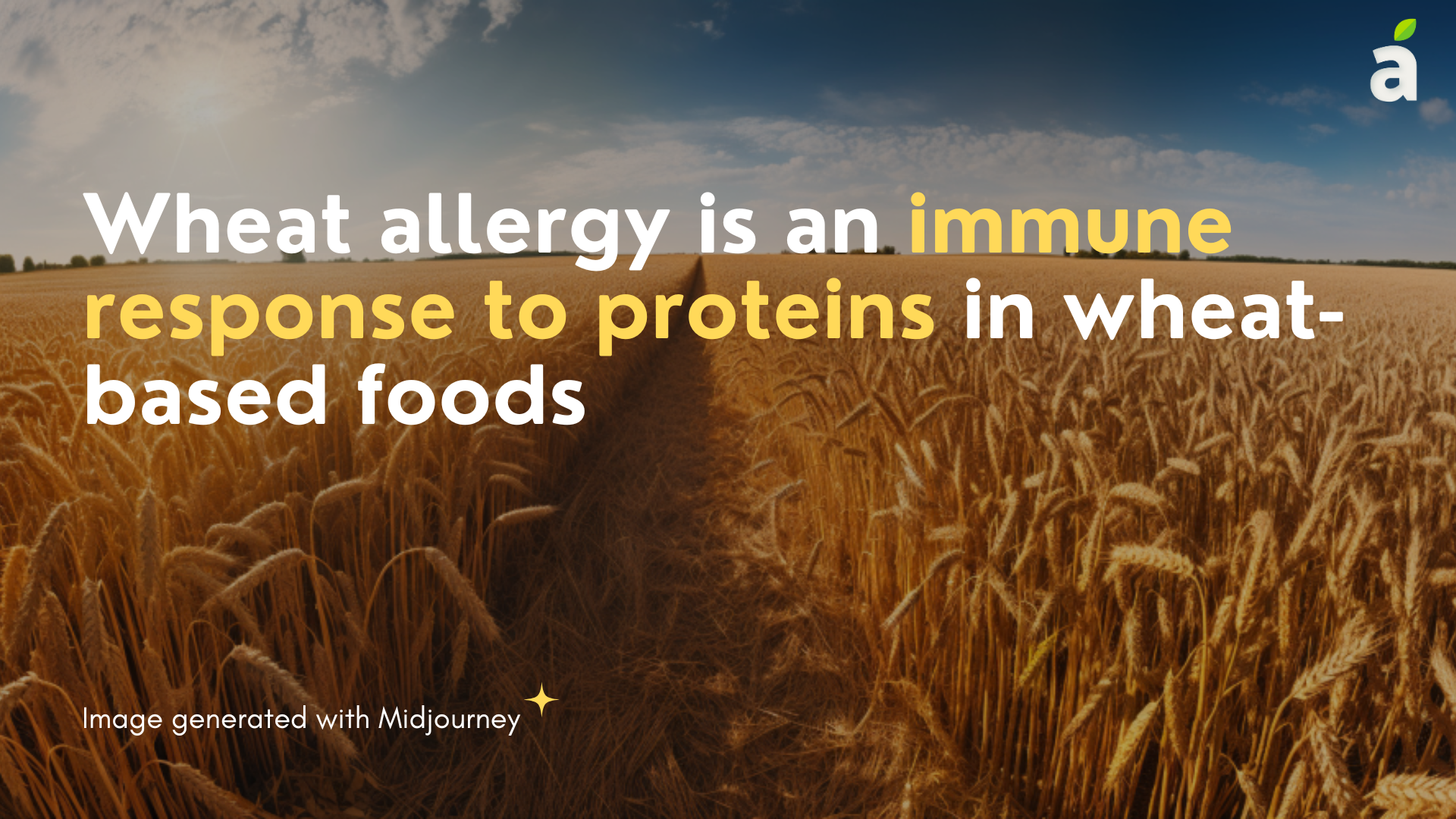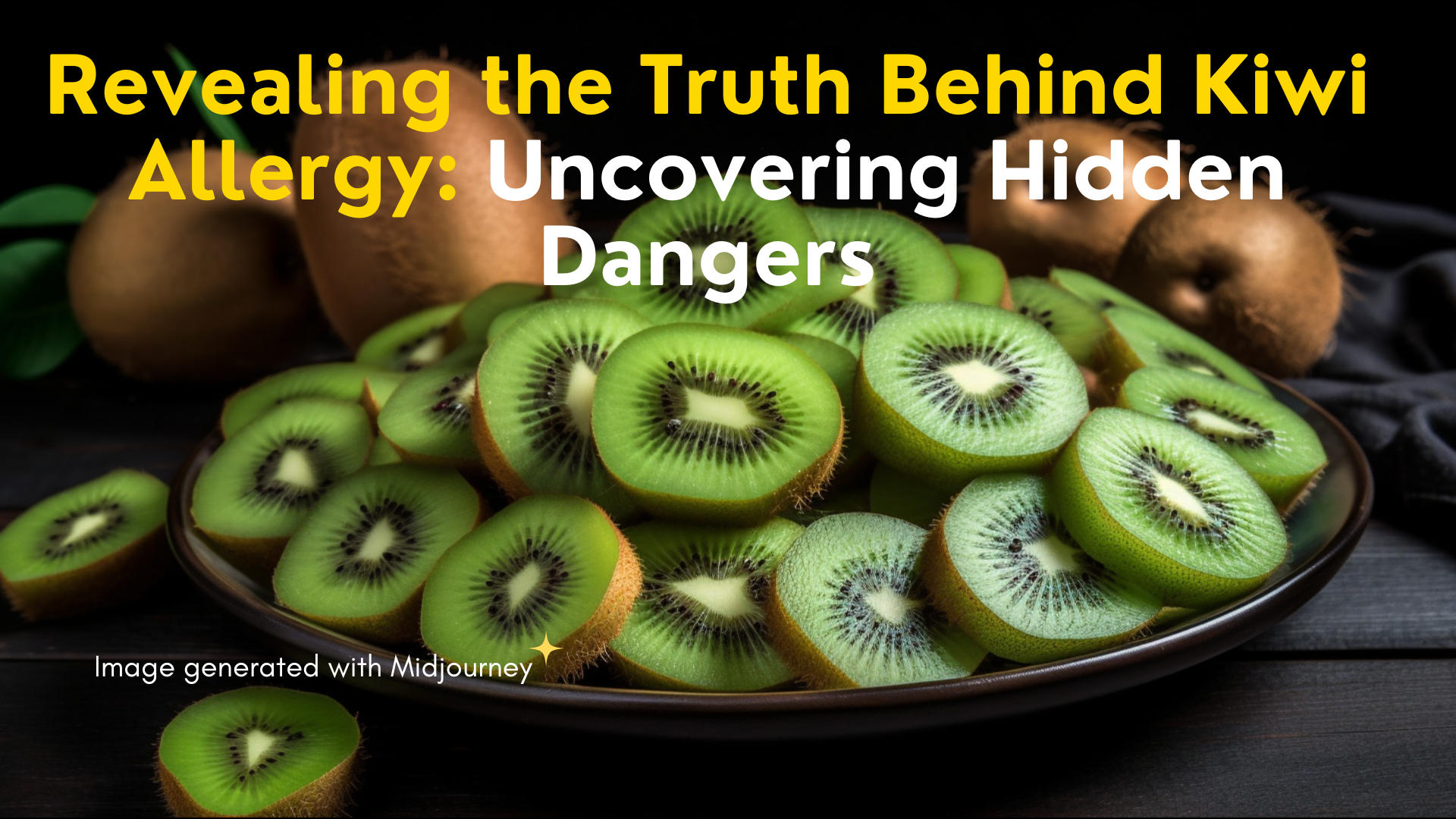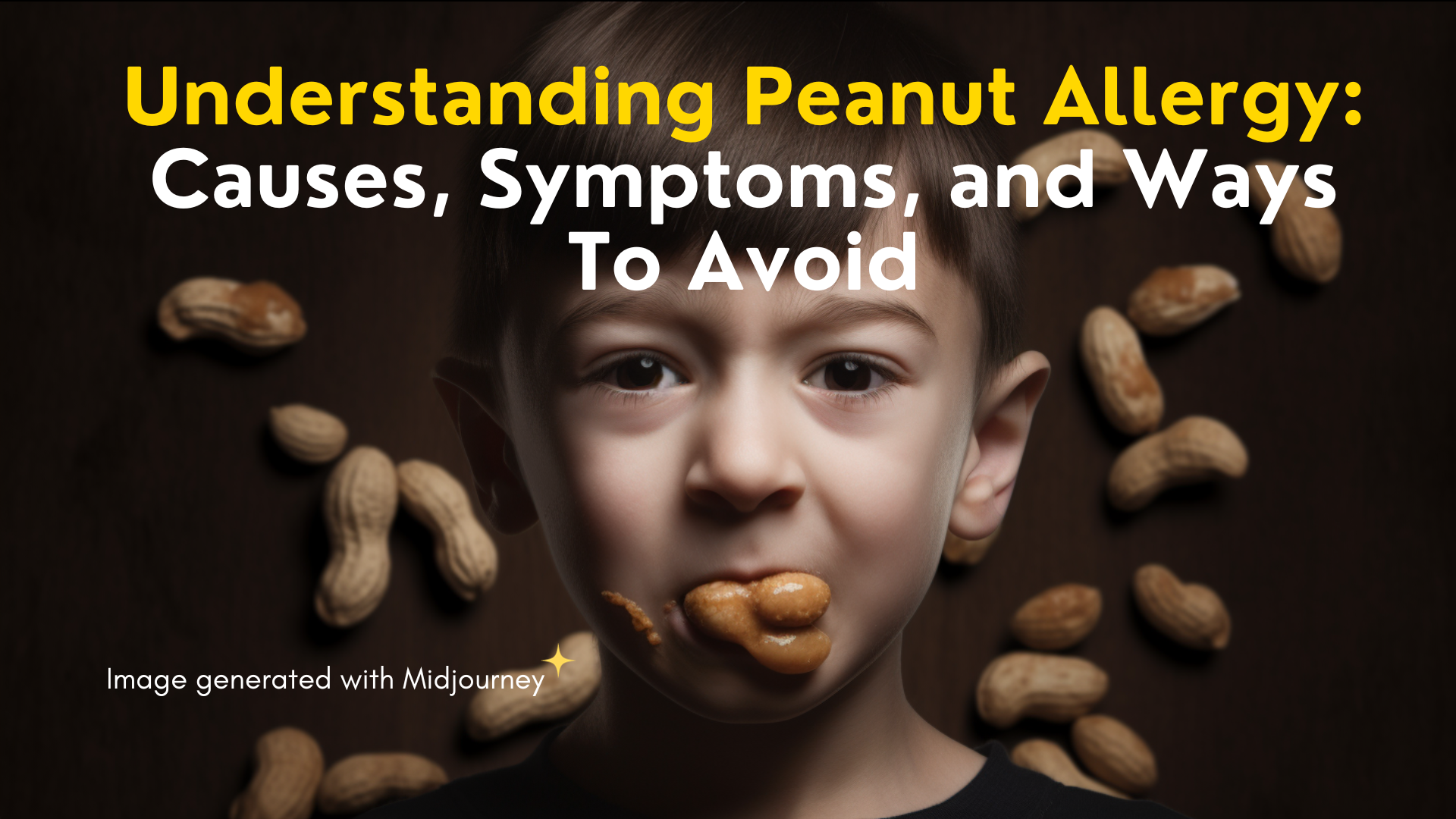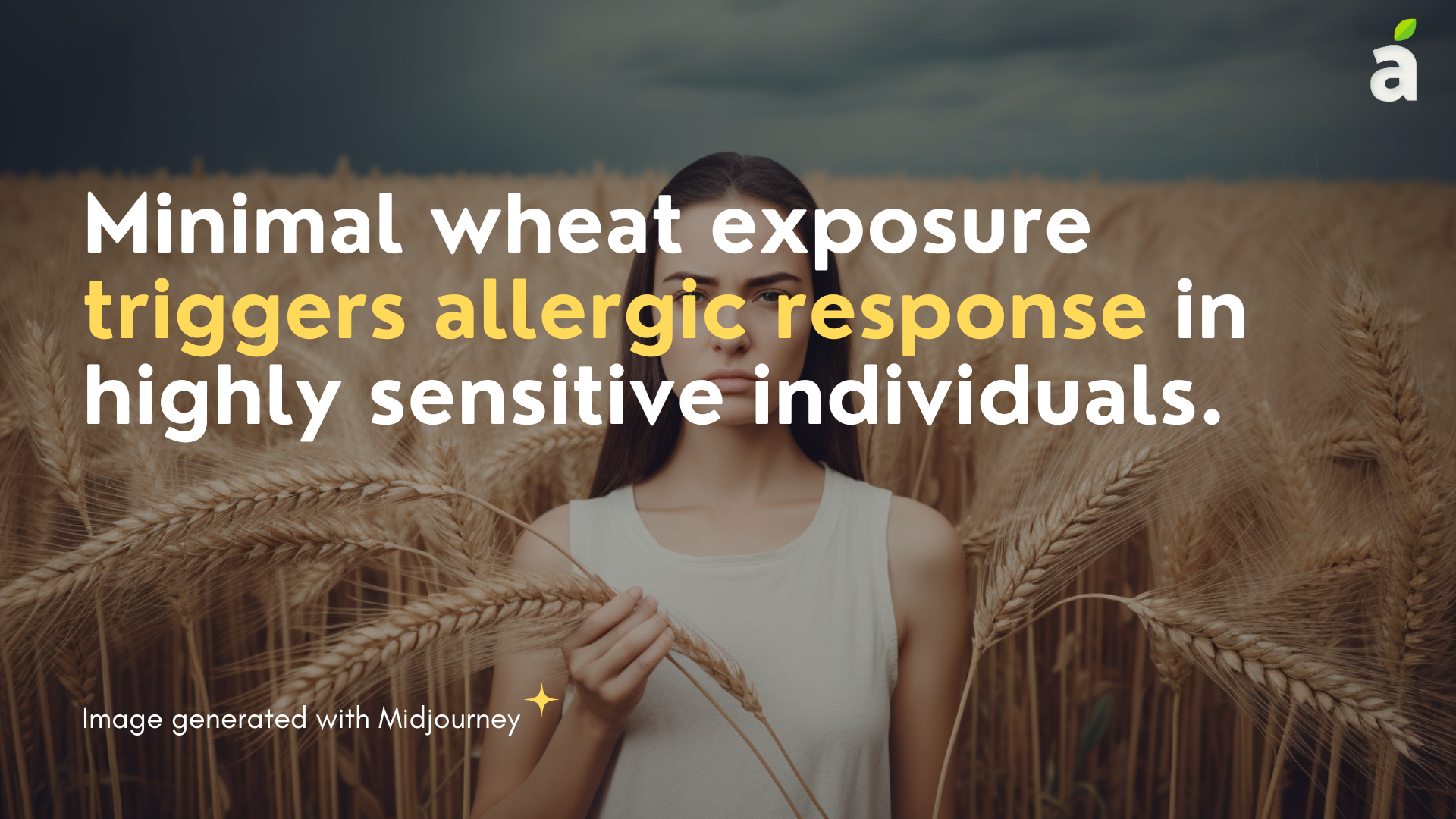Published Date January 24, 2003
Wheat Allergy and Debunking the Wheat-Gluten Myth
By Naurin Ansari
3 min read
Last update date: January 24, 2003

Wheat allergy is a common food allergy that affects individuals who are hypersensitive to proteins found in wheat. In this blog, we will explore the basics of wheat allergy, its symptoms, and effective management strategies, and address common misconceptions of wheat allergy being the same as a gluten allergy.
What is Wheat Allergy?
Wheat allergy is an immune system response that occurs when the body reacts to proteins found in wheat-based foods. Ingesting or inhaling wheat flour can potentially trigger allergic reactions in individuals with this condition. It's important to note that wheat allergy should not be confused with celiac disease, as they are distinct disorders.
In the case of wheat allergy, the immune system produces antibodies against wheat proteins, whereas celiac disease involves a different immune system response triggered by gluten, a specific protein found in wheat. Unlike celiac disease, which is an autoimmune condition, wheat allergy is an IgE-mediated immune reaction specifically targeting wheat proteins.[1]
Symptoms of Wheat Allergy
Wheat allergy can result in allergic reactions that occur within seconds, minutes, or hours after consuming wheat-based foods. It's worth noting that some individuals are highly sensitive to wheat to the point where even touching or smelling wheat-based foods can trigger an allergic response.
The following are potential symptoms of wheat allergy:
- Swelling, itching, and irritation in the throat
- Asthma flare-ups and breathing problems
- Skin-related symptoms include hives, itching, and eczema
- Nasal congestion and headaches
- Digestive issues such as stomach cramps, vomiting, and diarrhoea
- Severe reactions like anaphylaxis, characterized by difficulty breathing, a drop in blood pressure, and loss of consciousness
Awareness of these symptoms and seeking medical attention if you suspect a wheat allergy is important. Avoiding wheat and wheat-based products is primarily for managing the condition and preventing similar allergic reactions in the future.[2]
Managing Wheat Allergy
To manage wheat allergy, strict avoidance of wheat and wheat by-products is crucial. Consultation with a doctor and supervised testing, such as a skin-prick test or blood test, can confirm the allergy. Skin-prick tests involve injecting purified wheat protein under the skin to check for a reaction.
To effectively manage wheat allergy, the following strategies can be employed:
- Read Food Labels: Thoroughly check ingredient labels to identify wheat and its various derivatives. Familiarize yourself with alternative names for wheat, such as durum, semolina, and spelt. Be vigilant about hidden sources of wheat in processed foods, sauces, soups, and condiments.
- Modify Your Diet: Embrace a wheat-free diet by exploring gluten-free grains like rice, quinoa, millet, and corn. Look for wheat-free flour, such as almond flour, coconut flour, and rice flour as suitable alternatives.
- Communication and Education: Inform your family, friends, and healthcare providers about your wheat allergy to ensure a safe environment. Educate yourself about the risks of cross-contamination and ask relevant questions when dining out or attending social gatherings.
- Emergency Preparedness: If prescribed by your doctor, carry an epinephrine auto-injector at all times and develop an emergency action plan. Familiarize yourself with the signs and symptoms of anaphylaxis and know how to administer the auto-injector. Seek immediate medical assistance in case of a severe allergic reaction.
By implementing these measures, you can effectively manage wheat allergy and reduce the risk associated with these allergic reactions.[2]
Is Wheat Allergy the Same as Gluten Allergy?
Wheat allergy and gluten allergy (also known as celiac disease), are distinct conditions with different mechanisms and responses in the body. It is important to understand the differences between the two:
Wheat Allergy:
- Wheat allergy is an immune system response to proteins found in wheat.
- The allergic reaction is triggered by the immune system mistakenly identifying wheat proteins as harmful invaders.
- Symptoms can range from mild to severe and may include digestive issues, skin reactions, respiratory symptoms, and in rare cases even anaphylaxis.
- Strict avoidance of wheat and wheat-containing products is necessary to manage the allergy effectively.
Gluten Allergy (Celiac Disease):
- Celiac disease is an autoimmune disorder triggered by the ingestion of gluten, a protein found in wheat, barley, and rye.
- In celiac disease, the immune system attacks the lining of the small intestine when gluten is consumed.
- This autoimmune response leads to inflammation and damage to the intestinal villi, affecting nutrient absorption.
- Symptoms of celiac disease can include digestive problems, fatigue, weight loss, and nutrient deficiencies.
- The only treatment for celiac disease is a lifelong gluten-free diet and avoiding all sources of gluten.
While wheat allergy and celiac disease can coexist in some individuals, it is essential to differentiate between the two to ensure proper dietary modifications and management. It is advisable to consult with a healthcare professional for accurate diagnosis and guidance on managing these conditions.[3]
Takeaway
Wheat allergy is a prevalent food allergy that requires strict avoidance of wheat-containing products to prevent allergic reactions. Recognizing the symptoms, adopting appropriate management strategies, and understanding the difference between wheat allergy and gluten allergy are essential for individuals living with this condition. By taking proactive measures, individuals with wheat allergies can lead a safe and fulfilling lifestyle.
References
- https://www.mayoclinic.org/diseases-conditions/wheat-allergy/symptoms-causes/syc-20378897#:~:text=Wheat%20allergy%20is%20an%20allergic,as%20easy%20as%20it%20sounds
- https://www.livingbeyondallergies.com/wheat-allergy-101/
- https://acaai.org/allergies/allergic-conditions/food/wheat-gluten/#:~:text=Gluten%20is%20a%20protein%20found%20in%20grains%2C%20such%20as%20wheat,allergy%2C%20or%20sometimes%20celiac%20disease
Keep reading

Gluten Allergy and their Hidden Sources
By Naurin Ansari

Unmasking Kiwi Allergy and the hidden dangers
By Team Ariso

Cracking the Peanut Allergy Puzzle
By Naurin Ansari

Decrypting the Egg Allergy Mystery
By Naurin Ansari
Choose Healthy With Us.
Know the real truth about your food. Stay informed and healthy, for free.

Download the App Now
Certified nutritionists trust our food recommendations. Safe to say, so can you :)











